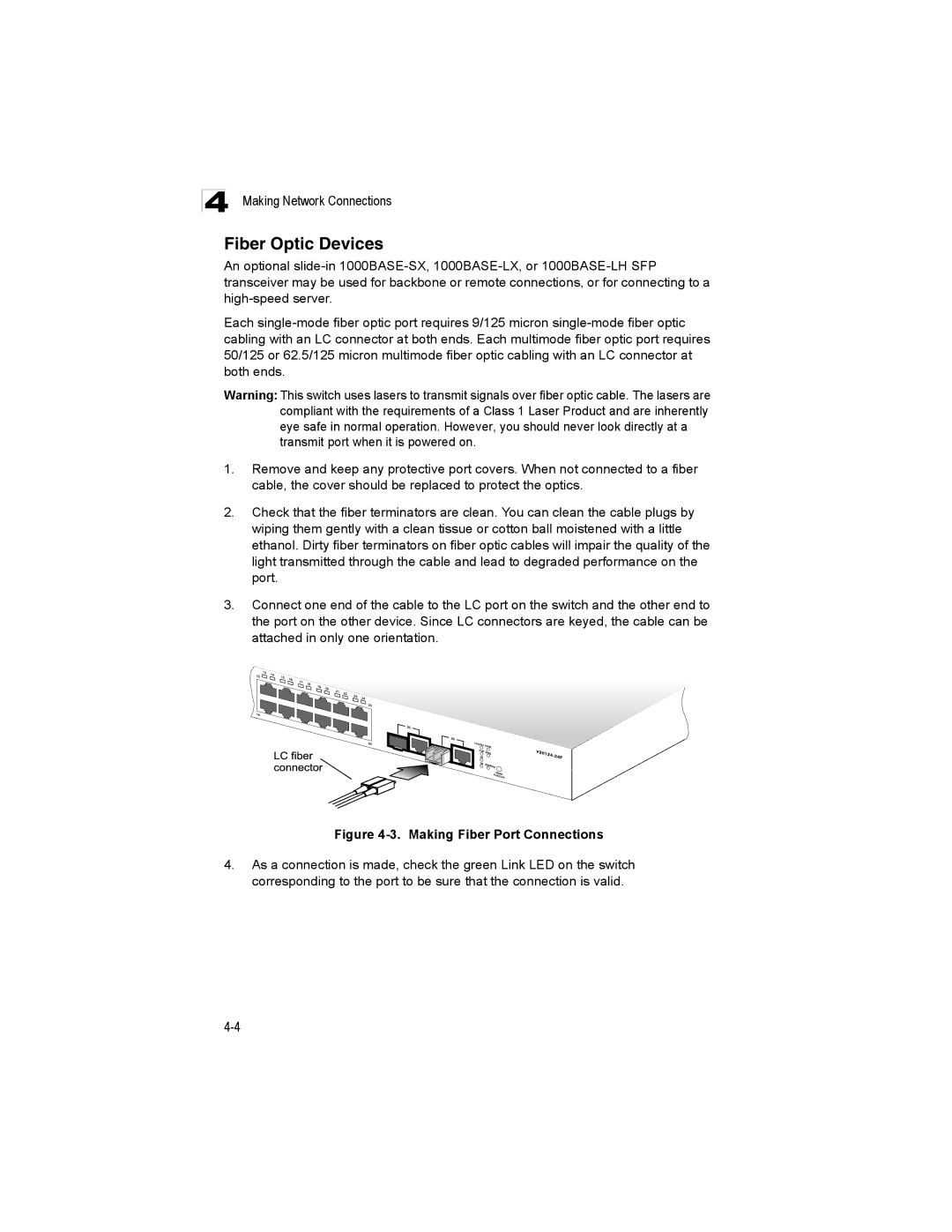
4 Making Network Connections
Fiber Optic Devices
An optional
Each
Warning: This switch uses lasers to transmit signals over fiber optic cable. The lasers are compliant with the requirements of a Class 1 Laser Product and are inherently eye safe in normal operation. However, you should never look directly at a transmit port when it is powered on.
1.Remove and keep any protective port covers. When not connected to a fiber cable, the cover should be replaced to protect the optics.
2.Check that the fiber terminators are clean. You can clean the cable plugs by wiping them gently with a clean tissue or cotton ball moistened with a little ethanol. Dirty fiber terminators on fiber optic cables will impair the quality of the light transmitted through the cable and lead to degraded performance on the port.
3.Connect one end of the cable to the LC port on the switch and the other end to the port on the other device. Since LC connectors are keyed, the cable can be attached in only one orientation.
Figure 4-3. Making Fiber Port Connections
4.As a connection is made, check the green Link LED on the switch corresponding to the port to be sure that the connection is valid.
